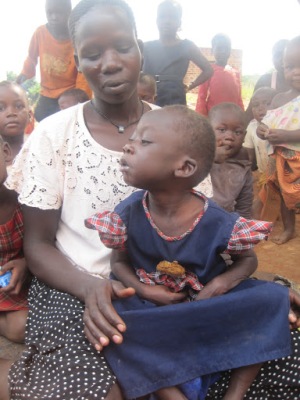When I said I was going to write a blog about “dust” people laughed. But I’m doing it anyway!
 |
| Dust hangs off banana trees along the Budondo Road |
People underestimate the effect dust has on lives! They think of it as an inconvenience, which of course it is. During dry season you cannot go along for even 5 minutes along a dirt road without your entire body being covered in a thick film of orange. Boda drivers wear their jackets backwards and wrap scarves around their faces to protect their clothing and faces but you’ll usually find they still end up with bright orange eyelashes.
 |
| Boda driver, Sam, in his “dust proof” outfit! |
 |
| My foot, thoroughly dusted! |
But I have a more intense objection to dust. It’s dangerous!
Firstly, think about the consequences of a five year old walking 5 km to school everyday along this road breathing this in. Numerous kids in Buwenda have health complications due to dust, mainly respiratory: persistent coughs, chest and sinus infections and of course continually runny noses.
 |
| The roadside along which the children walk to nursery. Hundred’s more walk kilometres to school everyday! |
The dust blinds you when a truck or a car speeds past, temporarily of course. But actually, the bacteria contained within the dust can cause both simple and complicated eye infections as well as irritation. And not to mention the danger of a boda driver missing a potential hazard – perhaps a child – has he struggles to keep the dust out of his eyes!
One effect of dust that I had not ever considered before living in Uganda is this: during dry season water is scarce. Most people who live in Buwenda collect water from boreholes, the river and if they can scrape together enough pennies, they buy it from a local tap. To ease this burden collecting rainwater in tanks or even simply basins as it rolls of the corrugated iron roofs is commonplace. In dry season, when the rains come as infrequently as once every six weeks, one would wait with great anticipation to catch it! But alas, the roof is coated with dust! And the only water you can catch is thick and dirty and completely unusable.
Okay, so that is pretty much all I’ve got to say on the subject of dust. But I still think it’s worth thinking about!













